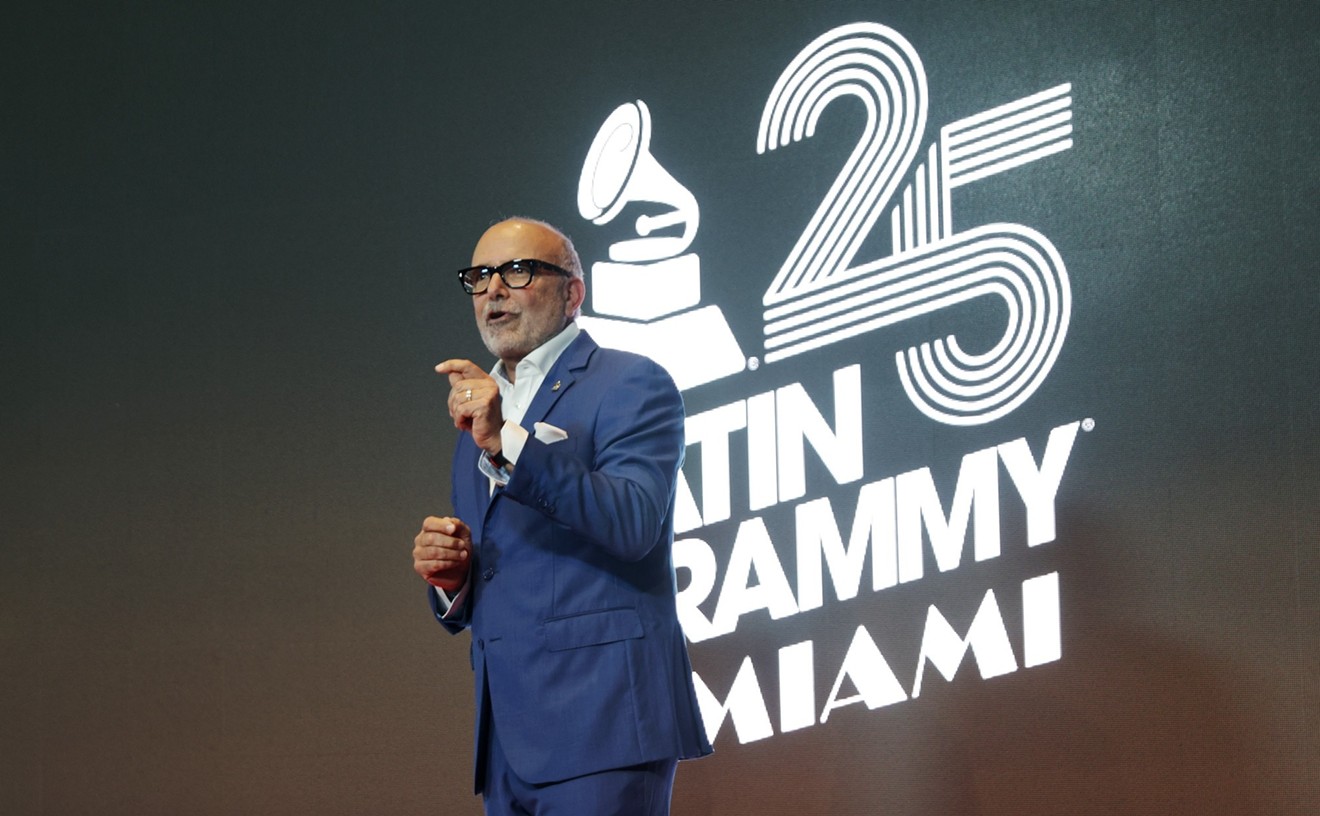U2
The Best of 1980-1990
(Island)
U2 is no stranger to division. During its early days, the band engaged in an internecine dispute over whether its sound should hew to the punk or Christian genres. (Thankfully it's fully neither.) The religious split in U2's homeland has clearly inspired the band in the creation of much of its 20-year oeuvre. And most recently its style has been split between youthful rock 'n' roll energy and the techno-infused dance beats so prevalent in the '90s. Some critics disapprove of the shift in musical character, claiming techno is too shallow a medium to inform the work of an angst-ridden Irish band. Some fans have expressed the same reservations. Criticism, however, hasn't stopped the group that Time, in 1987, dubbed "Rock's Hottest Ticket" from wallowing in the saccharine pop tunes of its last three albums.
In what appears to be one of the smartest, if not safest, moves the Yber-group has made, the recently released greatest-hits compilation covers the musical territory that made U2 popular both critically and commercially. The Best of 1980-1990 focuses on the early work that serves as the foundation for the band's career. The first half of the limited-edition, two-disc release features 14 of U2's best-known songs (actually 15, if you include the "hidden" track, "October," at the end of Disc One) wisely arranged in non-chronological order. Instead, the cuts from Boy (1980) and War (1983) hold their own against those from The Joshua Tree (1987) and Rattle & Hum (1988). Hearing the gospel-inspired harmony of "I Still Haven't Found What I'm Looking For" next to the coarse, throaty "Sunday Bloody Sunday" is a refreshing change.
True to its title, the album includes some of the foursome's best work, as well as the cultish fan favorite "Bad." The B-sides, however, are the biggest draw, which perhaps explains the album's debut at No. 2 on the Billboard chart. The supergroup has amassed quite a collection; even those who didn't buy the individual singles would likely have heard these tracks at one of U2's live spectacles.
The 15 B-sides on Disc Two follow a similar path as the first disc. Several cuts are remakes of classic rock tunes -- proof of U2's obsession with musical Americana. A languid version of Patti Smith's "Dancing Barefoot" and a cover of the Righteous Brothers' "Unchained Melody," done à la "With or Without You," add some appreciated novelty. "Trash, Trampoline and the Party Girl," performed unplugged, puts Bono's classic tortured vocals into the spotlight. "Sweetest Thing," a 1987 birthday present to his wife, gets its just desserts with two separate versions (one on the first disc) of the bittersweet love ballad.
The rest of the songs offer the quality of the band's better-known releases without providing a marked departure from U2's trademark style.
-- Liesa Goins
Andre Williams
Silky
(In the Red)
From the early '50s through the '70s, Chicago-based singer/songwriter/producer Andre Williams knocked out a dizzying number of wild, weird, and woolly R&B masterworks for a host of indie labels. A master of doo-wop and disco, novelty blues and shimmying instrumentals, Williams wrote and produced a string of sorta hits, including the 5 Du-Tones' pile-driving "Shake a Tail Feather." Under his own name, he waxed bizarre about everything from "Jail Bait" and "Bacon Fat" to the libidinous thrills of "Humpin', Bumpin', and Thumpin'," along the way introducing the masses to dance moves such as the Bacon Fat, the Greasy Chicken, and the Stroke. He retired in the late '70s but resurfaced last year on Norton Records with a horny Christmas single ("Poor Mister Santa") and a marginally successful longplayer, Greasy.
With his latest album, Silky, a collaboration with ex-Gories guitarists Mick Collins and Dan Kroha, Williams has concocted an X-rated masterpiece of sleazy, sex-crazed, punked-up R&B, with thick, chunky riffs, primitive grooves, sleazy organ wails, and Williams' throaty, lecherous growl of a voice. Obsessed almost to a fault with sex -- or, as he puts it, "the big nasty" -- Williams writes shit-talking pleas that leave no question as to what's on his mind.
The titles say it all: "I Wanna Be Your Favorite Pair of Pajamas," "Bonin'," "Looking Down at You -- Looking Up at Me," "Let Me Put It In" -- you get the idea. It's all about as PC as a drunken night at a strip club, and you can bet Tipper Gore would ban it on sight for the cover art alone (and would probably faint if she ever heard the self-explanatory "Pussy Stank"). That wouldn't mean a thing if Williams, Collins, and Kroha didn't set these songs to music that moves to the same slinky rhythms as Williams' favorite pastime. Do they? Oh my, indeed they do. (In the Red, 2627 E. Strong Place, Anaheim, CA 92806)
-- John Floyd
Pearl Jam
Live on Two Legs
(Epic)
Pearl Jam's is an unlikely story of how a band learned to do things its own way. It began with the Grunge revolution of 1991. On the strength of its multiplatinum debut, Ten, the band was everywhere, including the '92 Lollapalooza tour and MTV. But when Pearl Jam achieved success, it pulled back, refusing to make videos and going all the way to Capitol Hill in a fight against Ticketmaster. Part of the retreat included making less bombastic records, and -- best of all -- singer Eddie Vedder no longer appears to be campaigning for the post of spokesperson of his generation. Pearl Jam's loss to Ticketmaster kept it from touring for a couple of years and stunted its popularity but helped the band regain a bit of a fighting edge.
Part of this desire to maintain credibility is evident on the song selection of Live on Two Legs. It's not a greatest-hits package; only two hits -- "Black" and "Even Flow," from their first and best-selling record, Ten -- are included. Instead Live is evenly culled from the group's five studio albums.
The gleaming guitars of "Corduroy," with ex-Soundgarden drummer Matt Cameron (a temporary fill-in) providing a low-end boom, come close to delivering the epiphanies of which Pearl Jam is capable. And on "Given to Fly," Cameron starts as the lead instrument, tribal and flowing, before the guitars catch up and Vedder lets loose with impassioned singing. But "Hail Hail" comes closest to the essence of the band live, offering an almost punk passion (but not the sloppiness), with Vedder chewing up the scenery, singing through gritted teeth.
Unfortunately that's about it for the bright spots. The downfall of the record is the lack of variation. It offers just one tempo and one mood: midtempo and rocking. Song after song, the band hits its instruments hard but without much deviation. More passion would help as well.
The world is short on rock bands that can carry Neil Young's earnest torch and piss off people in the music business by handling fame with integrity. On Live, Pearl Jam covers Young's "Fuckin' Up," and Vedder sings a verse of "Rockin' in the Free World" during "Daughter." But the band doesn't demonstrate much of Young's exuberance. In fact, what the record proves is that, as well-intentioned as it is, Pearl Jam has created a lot of similar-sounding songs. -- David Simutis










